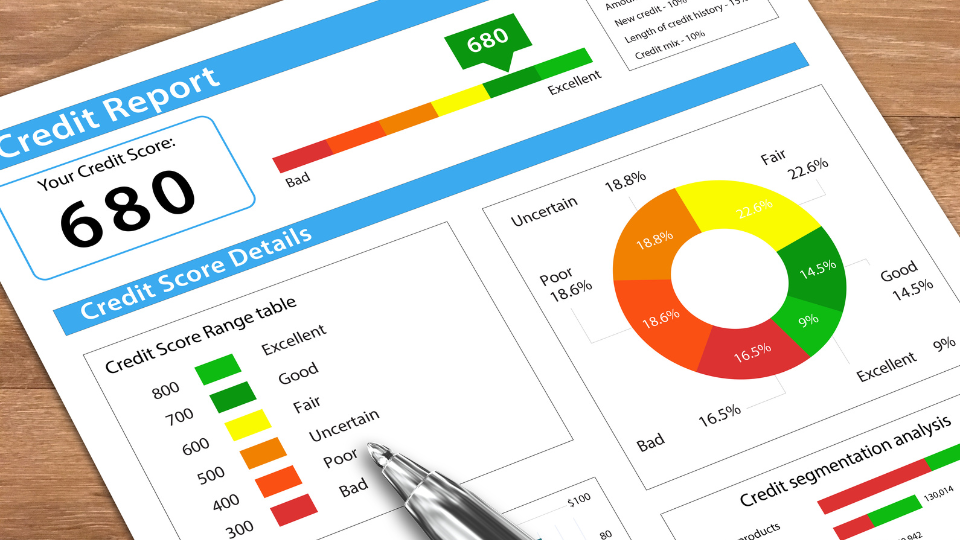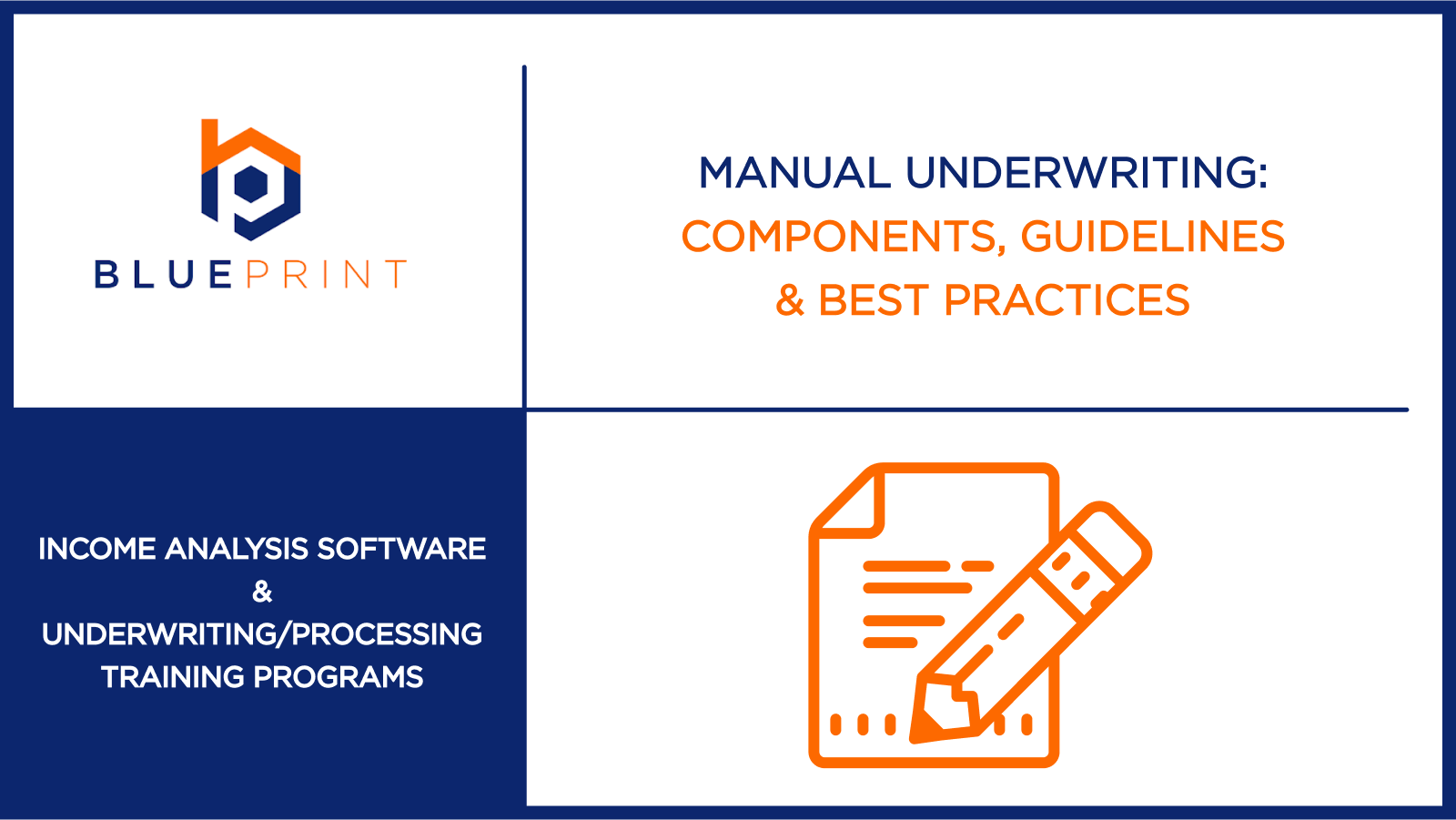Manual underwriting remains a key part of the mortgage approval process when borrowers fall outside the parameters of automated underwriting systems (AUS)—such as those with non-traditional income, limited credit history, or recent financial hardship. While manual reviews allow for a more personalized and flexible assessment, they can also be time-consuming and error-prone without the right tools in place.
This article outlines when manual underwriting is required, breaks down its key components, and highlights best practices based on agency guidelines. You’ll also learn how solutions like IncomeXpert can help streamline income calculations, support compliance, and reduce errors—making the process more efficient and consistent without sacrificing thoroughness.
Main takeaways from this article:
- Manual underwriting offers personalized evaluations for applications that don’t fit automated criteria, emphasizing details like credit history, employment stability, and assets.
- Government guidelines from Fannie Mae, Freddie Mac, FHA, VA, and USDA ensure comprehensive and fair manual underwriting standards.
- Best practices, including complete borrower information and leveraging technology, enhance accuracy and efficiency in manual underwriting.
- IncomeXpert is a cutting-edge solution that simplifies underwriting, ensuring compliance and reducing human errors with automated features.
What is manual underwriting?

Manual underwriting is a detailed review process carried out by qualified underwriters to assess the risk associated with mortgage applications that often lack the required criteria for automated underwriting. This meticulous process often involves a thorough evaluation of borrower capacity, credit history, and financial documents and allows for a more personalized analysis that considers factors that may not be captured by automated systems, such as irregular income or unique employment situations.
When is manual underwriting required?
Detailed, human-driven underwriting becomes particularly essential when the circumstances surrounding a loan application deviate from standard criteria typically evaluated by AUS, such as:
- The borrower’s financial profile deviates from standard lending criteria
- The borrower has a limited credit history or non-traditional credit
- The borrower has experienced significant financial events, such as bankruptcy or foreclosure
- The automated underwriting system generates a “refer” or “caution” result
Manual underwriting vs. automated underwriting
Manual underwriting involves a skilled underwriter meticulously reviewing an applicant’s financial documents, credit history, and other relevant information. This comprehensive review allows for a nuanced understanding of unique situations, from non-traditional income sources to credit blemishes, and ensures that every facet of the borrower’s financial situation is carefully considered.
On the other hand, automated underwriting leverages advanced technology and algorithms to assess a borrower’s ability to repay loans based on predetermined criteria, expediting the decision-making process. While automated underwriting systems can process a high volume of applications quickly, manual underwriting excels in fairness and a case-by-case analysis.
Key components of the manual underwriting process

Manual underwriting involves a comprehensive examination of a borrower’s financial status through:
Reviewing credit reports and credit scores
Looking at the borrower’s credit report and credit score helps underwriters evaluate their credit history for any red flags, such as late payments, delinquencies, or bankruptcies. The credit score gives insight into the borrower’s creditworthiness, while the credit report reveals an in-depth account of their borrowing behavior.
Assessing income stability and employment history
Underwriters verify the borrower’s income through pay stubs, W-2s, tax returns, and bank statements. They evaluate the stability and consistency of income, considering factors like job tenure, industry stability, and potential future income.
For borrowers with fluctuating income—such as those who earn overtime, commission, bonuses, or are self-employed—underwriters may need to analyze multiple pay stubs, year-to-date earnings, tax returns, or profit and loss statements to gain a comprehensive picture of the borrower’s financial reality.
Calculating debt-to-income (DTI) ratio
Another key component of manual underwriting is calculating the debt-to-income (DTI) ratio, which compares the borrower’s monthly debt payments to their gross monthly income.
A lower DTI indicates a healthier financial situation, which is essential for determining loan affordability. Underwriters will closely scrutinize the borrower’s existing debt obligations to accurately calculate this ratio.
Documenting assets and reserves
Underwriters also need to confirm the borrower’s assets and reserves to ensure they have enough funds for a down payment and closing costs. This involves reviewing bank statements, investment accounts, and any other liquid assets.
A thorough understanding of the borrower’s financial reserves is crucial, especially for those seeking loans that may require large down payments or lower credit scores.
Government and agency guidelines

Lenders must adhere to specific guidelines set by government agencies and secondary market investors for assessing borrower risk, especially for loans like FHA and VA.
Fannie Mae and Freddie Mac (Conventional Loans)
Fannie Mae and Freddie Mac are two key players in the secondary mortgage market. They buy and securitize loans from lenders, and their guidelines dictate how lenders assess loan eligibility for conventional loans.
When it comes to manual underwriting for Fannie Mae or Freddie Mac, use the following criteria:
- Underwriters must carefully review the borrower’s credit report, evaluating credit accounts, credit payment history, and any derogatory marks. A clean credit history is crucial, although compensating factors can be considered for borrowers with less-than-ideal credit scores.
- For manual underwriting, a maximum DTI ratio of 43% is generally allowed, though higher DTIs may be acceptable if compelling compensating factors are present. This assessment includes all monthly debt obligations compared to gross income.
- Documentation of assets and reserves is vital. Fannie Mae requires borrowers to have enough reserves (liquid assets) to cover several months of mortgage payments.
- Generally, underwriters prefer to see two years of steady employment in the same field, although exceptions may apply for those with unique circumstances.
FHA Manual Underwriting Guidelines
The FHA offers mortgage insurance on loans made by approved lenders, allowing borrowers with lower credit scores and smaller down payments to qualify for home financing.
The FHA provides the following specific manual underwriting guidelines:
- FHA borrowers need a minimum credit score of 580 for a 3.5% down payment. Those with scores between 500 and 579 can qualify for a loan with a 10% down payment, but they must undergo detailed manual underwriting.
- The FHA guidelines typically allow a maximum DTI ratio of 43%. However, underwriters may consider DTIs above 43% if there are compensating factors, such as a significant cash reserve or a history of on-time payments despite higher debts.
- FHA allows underwriters to explore mitigating circumstances for borrowers with unfavorable credit profiles. These might include increased reserves, a stable employment record, or a satisfactory rental history.
- Underwriters are required to assess all income sources, including salaries, bonuses, overtime, and any non-traditional income sources, such as alimony or child support, using documentation like pay stubs and tax returns.
VA Loan Manual Underwriting Guidelines
VA loans, guaranteed by the U.S. Department of Veterans Affairs, help veterans, active-duty service members, and certain members of the National Guard and Reserves obtain homeownership.
The following are key aspects of the VA’s manual underwriting guidelines:
- The VA does not impose a minimum credit score, but lenders may establish their own criteria. Generally, a credit score of 620 or above is favored to streamline the underwriting process.
- VA underwriting focuses on residual income rather than DTI ratios, evaluating the funds left after all debts are paid to ensure borrowers can manage living expenses post-mortgage payments.
- Consistent employment, ideally in the same field for two years, enhances the borrower’s profile. Underwriters can apply some discretion concerning non-traditional employment histories, especially for service members transitioning from military service.
- While a maximum DTI ratio of around 41% is typical, VA loans may allow for higher DTIs if residual income criteria are met.
USDA Manual Underwriting Guidelines
The USDA provides loans for eligible rural and suburban homebuyers who meet specific income limits. Manual underwriting for USDA loans requires careful attention to relevant factors:
- USDA loans have specific income limits based on household size and location. To qualify for a USDA loan, the borrower’s total income must not exceed 115% of the area’s median income.
- While the USDA does not set stringent credit score minimums, lenders typically prefer scores above 640 to facilitate the automated underwriting process. For lower scores, manual underwriting becomes necessary to evaluate the borrower’s overall financial situation.
- Lenders should look for a maximum debt-to-income ratio of 41%, but higher ratios may be accepted with compensating factors, such as a strong payment history or significant reserves.
- USDA guidelines encourage underwriters to consider non-traditional factors like demonstrated fiscal responsibility and employment prospects in rural areas.
Best practices for successful manual underwriting

Following these best practices will lead to a more effective and compliant underwriting process.
Ensure complete and accurate borrower financial information
To streamline the process, lenders should collect thorough documentation and financial information from borrowers upfront. This minimizes delays and helps underwriters make informed decisions based on complete financial profiles. Also, regularly checking in with borrowers can help ensure that nothing is missed.
Standardize income calculations and documentation
Establishing standard methods for income calculations can enhance consistency during the manual underwriting process. Using specific guidelines for different types of income, such as hourly wages versus commission-based pay, helps create uniformity and reduces the potential for errors.
Leverage compensating factors when needed
Train to identify and apply compensating factors when a borrower’s profile does not meet traditional benchmarks. For example, a high credit score may be used as a compensating factor for a borrower with a higher DTI or limited reserves.
Utilize technology to reduce manual errors
Implement technology solutions to improve organization, streamline the manual underwriting process, and reduce the margin for error. When underwriters use effective tools for data collection, reporting, and documentation, they can achieve faster outcomes while ensuring consumer protection as a priority.
How IncomeXpert simplifies manual underwriting
IncomeXpert is a solution designed to streamline income calculations and enhance accuracy in manual underwriting.
Automated income calculations
IncomeXpert provides innovations that facilitate efficient income calculations through automated algorithms, ensuring accuracy from upfront assessments. By minimizing reliance on manual input, IncomeXpert reduces the potential for human error in the income verification process.
Real-time underwriting advisories
The platform offers real-time advisories that assist underwriters in assessing applications as they progress through the review process. This proactive feedback helps catch potential issues before they become significant hindrances, ensuring smoother processing.
AI-powered OCR and human review
With AI-powered Optical Character Recognition (OCR) technology, IncomeXpert PLUS can quickly and accurately extract data from documentation submitted by borrowers. Human review mechanisms further confirm the accuracy of these calculations, ensuring comprehensive checks are in place.
Multi-agency compliance support
IncomeXpert offers multi-agency compliance support, including Fannie Mae, Freddie Mac, FHA, VA, and USDA. This ensures that all calculations and guidelines meet the necessary regulatory standards while maintaining high efficiency.
Reduce manual underwriting errors with IncomeXpert
Manual underwriting remains essential in many lending scenarios—but it doesn’t have to mean more risk or inefficiency. IncomeXpert helps lenders reduce errors and streamline the process by automating complex income calculations, applying agency-specific rules, and delivering real-time compliance alerts.
Whether you’re using the core platform or advanced features like OCR and dual-layer review in IncomeXpert PLUS, the result is greater consistency, accuracy, and confidence across loan files. To see how IncomeXpert can enhance your manual underwriting workflows, request a demo today!
Manual underwriting FAQs
Do banks still do manual underwriting?
Yes, banks continue to employ manual underwriting for applications that do not meet automated underwriting guidelines or where unique borrower circumstances require in-depth review.
What are the disadvantages of manual underwriting?
Manual underwriting can be time-consuming, labor-intensive, and prone to human error. These factors can lead to inconsistency and longer processing times. It also requires experienced underwriters with in-depth knowledge of agency guidelines.

